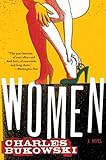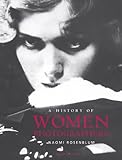I promised myself when I started this blog that I would not become a polemicist raging against the art world. It's too easy, like shooting fish in a barrel. Better to do something positive, work within the system for change.
But sometimes I need to vent.
I attended an art fair here in LA last week and will hold my nose and go to another one this week. I go to art fairs mainly because I feel I should go, despite the fact that they almost always put me in a foul mood. The vast carpeted sterility of the convention center combined with the amount of mostly mediocre work packed into booths, screaming for attention makes me want to flee.
But rather than going on about the fair itself, let me just say that my inspiration on that particular day came not from the art, but from my conversation with friend and artist Lisa Adams who accompanied me there.
As we strolled through the booths, Lisa talked about what she calls "authenticity" or honesty in art -- emotional authenticity, honesty in intent, honesty and skill in execution, an ability to cut through the noise and speak directly through one's work, human to human, to inspire, to strive for the nobler aspects of art.
What has the art world become? Corporate sponsorships, art stars, billionaire collectors donating museum wings to perpetuate their art-as-investment legacy, and now even a stock exchange for art -- how far have we strayed from the fundamental impulses of art? Isn't art supposed to be different from, even the antithesis of, say, selling cars? Something is very wrong when art becomes all about money.
I've found no better representation of the state of the art world than New York artist and former art critic William Powhida's humorous but spot-on drawing “A Guide to the Market Oligopoly System.”
Powhida quotes the Wikipedia definition of oligopoly at the top of the page:
"In economics, an oligopoly is a market form in which a market or industry is dominated by a small number of sellers. Because there are few sellers, each oligopolist is likely to be aware of the actions of the others. The decisions of one firm influence, and are influenced by the decisions of other firms."
On Powhida's pyramid, the art stars are at the apex. You'll notice the three stars he mentions are Koons, Hirst and Murakami, each of whom has become a recognized brand, the equivalent of a corporate CEO, making huge amounts of money with large studios full of assistants who make their art for them. How is this different from say, McDonalds, The Gap or Toyota?
We work our way down Powhida's pyramid through museums, auction houses, blue chip brands, commercial galleries, to the bottom, to the masses of "students, unknowns, regional artists, unrepresented artists, professors, outsider artists, art enthusiasts . . ."
Or as I've heard it put, in the art world, you're either a 1 or a 10.
How do artists and galleries stay authentic when the deck is so hugely stacked against them? How do you not give in to the realities of the market place? Why are there so many artists and relatively little demand for what they do?
I run a small commercial gallery, work 24/7 without a salary, and love every minute of it. I try to show quality work and not make it all about sales, but am only able to do this because of a modest inheritance, a wonderful man who supports me in everything I do, and a low overhead (the gallery is in our house). In short, I am not making money. I wouldn't mind it, but for now I feel lucky to be breaking even.
I know many artists, none of whom can support themselves solely from selling their work. They juggle part-time jobs, often live near the poverty level and can't even think about things like owning a home or a retirement plan.
So why do we do it?
William Powhida asks basically the same question at the bottom of his pyramid, "So why do you persist?" and comes up with the answer, "It's a labor of love or willfull [sic] ignorance of the odds."
Cynical? Perhaps. But is it an accurate reflection of the art world and maybe even our society as a whole? Is our society culturally bankrupt? I hope not, but only time will tell.
But sometimes I need to vent.
I attended an art fair here in LA last week and will hold my nose and go to another one this week. I go to art fairs mainly because I feel I should go, despite the fact that they almost always put me in a foul mood. The vast carpeted sterility of the convention center combined with the amount of mostly mediocre work packed into booths, screaming for attention makes me want to flee.
But rather than going on about the fair itself, let me just say that my inspiration on that particular day came not from the art, but from my conversation with friend and artist Lisa Adams who accompanied me there.
As we strolled through the booths, Lisa talked about what she calls "authenticity" or honesty in art -- emotional authenticity, honesty in intent, honesty and skill in execution, an ability to cut through the noise and speak directly through one's work, human to human, to inspire, to strive for the nobler aspects of art.
What has the art world become? Corporate sponsorships, art stars, billionaire collectors donating museum wings to perpetuate their art-as-investment legacy, and now even a stock exchange for art -- how far have we strayed from the fundamental impulses of art? Isn't art supposed to be different from, even the antithesis of, say, selling cars? Something is very wrong when art becomes all about money.
I've found no better representation of the state of the art world than New York artist and former art critic William Powhida's humorous but spot-on drawing “A Guide to the Market Oligopoly System.”
 | ||
|
"In economics, an oligopoly is a market form in which a market or industry is dominated by a small number of sellers. Because there are few sellers, each oligopolist is likely to be aware of the actions of the others. The decisions of one firm influence, and are influenced by the decisions of other firms."
On Powhida's pyramid, the art stars are at the apex. You'll notice the three stars he mentions are Koons, Hirst and Murakami, each of whom has become a recognized brand, the equivalent of a corporate CEO, making huge amounts of money with large studios full of assistants who make their art for them. How is this different from say, McDonalds, The Gap or Toyota?
We work our way down Powhida's pyramid through museums, auction houses, blue chip brands, commercial galleries, to the bottom, to the masses of "students, unknowns, regional artists, unrepresented artists, professors, outsider artists, art enthusiasts . . ."
Or as I've heard it put, in the art world, you're either a 1 or a 10.
How do artists and galleries stay authentic when the deck is so hugely stacked against them? How do you not give in to the realities of the market place? Why are there so many artists and relatively little demand for what they do?
I run a small commercial gallery, work 24/7 without a salary, and love every minute of it. I try to show quality work and not make it all about sales, but am only able to do this because of a modest inheritance, a wonderful man who supports me in everything I do, and a low overhead (the gallery is in our house). In short, I am not making money. I wouldn't mind it, but for now I feel lucky to be breaking even.
I know many artists, none of whom can support themselves solely from selling their work. They juggle part-time jobs, often live near the poverty level and can't even think about things like owning a home or a retirement plan.
So why do we do it?
William Powhida asks basically the same question at the bottom of his pyramid, "So why do you persist?" and comes up with the answer, "It's a labor of love or willfull [sic] ignorance of the odds."
Cynical? Perhaps. But is it an accurate reflection of the art world and maybe even our society as a whole? Is our society culturally bankrupt? I hope not, but only time will tell.
Currently on View at Offramp Gallery
In her second solo show at Offramp Gallery, The Sun Tells Quite Another Story, photographer Anita Bunn presents a new series of works that continue her exploration of the act of noticing as well as the temporal nature of the still and moving image.
Click here to read the LA Times review.
In addition to five stunning new 40" x 40" archival digital prints that are exhibited in the Main Gallery, Anita has worked with two master printmakers to explore traditional photographic printmaking techniques. By printing the same image four ways -- as a halftone photolithograph, continuous tone photolithograph, photogravure and salt print -- the subtle shifts and changes that occur through these varied processes become evident. A continuous loop video, the mesmerizing Measure, made by Bunn in 2008, is on display in the Guest Room. The exhibition runs through February 6, 2011.









